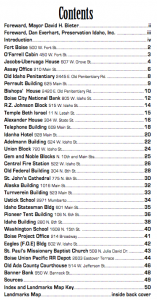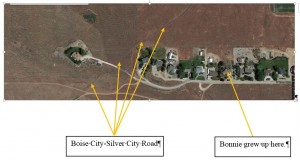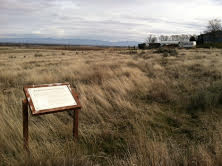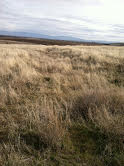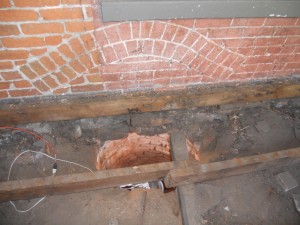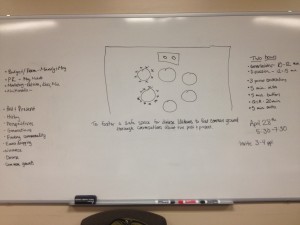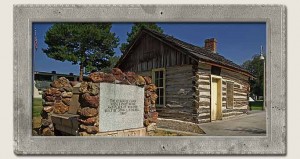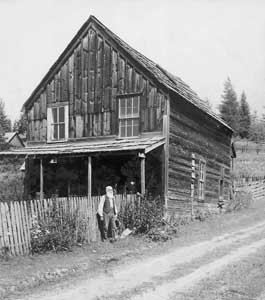Meggan Reflections 3/02/15
The more I read and explore, the more I realize what I do not know, or misunderstood about historic preservation! Again, my post could be way too long on this subject after poking around the NPS website and reading the Tyler, et. al. book.
I was getting confused between National Historic Landmarks and National Register of Historic Places designation criteria and governing responsibility. Shows how ignorant of this stuff I am! So now I understand that NHLs have official Dept of Interior recognition and therefore are designated by the Secretary of Interior as the most significant national historic places: “buildings, sites, districts, structures, and objects that possess exceptional value or quality in illustrating or interpreting the heritage of the United States in history, architecture, archeology, engineering, and culture.” It has a much higher criteria than NHP. Majority power to object (with more than one property owner) was interesting, too, in that it can stop the Secretary of the Interior from designating. I didn’t realize that these places can be within units of the National Park System, or not. I found it interesting that one of its objectives was educational: “because it leads to increased public attention to and interest in a property.” And, again, after reading, I now know that upon designation, National Historic Landmarks are also then listed in the National Register of Historic Places. National Register of Historic Places is the “official federal list of districts, sites, buildings, structures, and objects significant in American history, architecture, archeology, engineering, and culture. National Register properties have significance to the history of their community state, or the nation.” These are nominated more locally, from State Historic Preservation Officers (SHPOs), Federal Preservation Officers, Tribal Historic Preservation Officers (tribal lands), private individuals and organizations, cities, and Tribes. Also, not until I read all this did I understand the issue of local control, not necessarily government control regarding private property. Community engagement is really important, but it can also be really subjective and weighted without strong guidelines, reviews, and individuals. (Sorry to bore you all with this but I had to type it up to better help me remember it all and to have for reference!)
Here are a few issues that were raised for me, and a bunch of URLs that were cool to explore!
• What is in Boise’s Backyard?
Local information points to some resources we have right here in Boise:
Could we ask Dan Everhart (Preservation Idaho), John Bertram (Planmakers and Preservation Idaho), or Barbara Perry-Bauer (TAG Historical Consulting), to speak to us, or join our walk? The Preservation Idaho website is very good: http://www.preservationidaho.org/
The annual “Onions and Orchids” event will be in Sandpoint this year if anyone wil be there March 30. That’s been a good “pulse-check” of what is good and not-so-good in the world of historic preservation: http://www.preservationidaho.org/event/2015/38th-annual-orchids-onions-awards-ceremony.
Does anyone want to join me June 20th for the “Up on the Roof Deux” (second year) event in support of Preservation Idaho? Kinda cool event on rooftops in Boise to learn more about old and new Boise buildings, with food, drinks, music.
I settled for this Wiki site on Boise (Ada County) NHP list for dates, places:
http://en.wikipedia.org/wiki/National_Register_of_Historic_Places_listings_in_Ada_County,_Idaho
I learned a bit more about Historic Districts, too! The City of Boise’s website had a decent way to search each: http://pds.cityofboise.org/planning/hp/districts/
We have nine historic preservation districts: East End, North End, Hays Street, Warm Springs Avenue, Harrison Boulevard, Hyde Park, Old Boise, South Eighth Street, Spaulding Ranch. Maybe we could visit one or for our class walking tour?
This was new to me – the impact of living in an Historic District: “For most homeowners, living in an historic district has little impact on the use and improvement of their property. Under State and local law, property owners must secure a Certificate of Appropriateness for external alterations to houses and structures. Major alterations (including demolitions and new construction) are reviewed by the Historic Preservation Commission in public hearings. Anyone want to go to one of those? I may! Maybe that is what happened with the castle? Historic Districts can be prey to subjective power, money, or “groupthink” on designations, approvals, alterations…the book makes the case clearly that community surveillance and action/neighborhood protection is preferred.
Idaho State Historical Society (ISHS) Sites and National Landmarks map:
http://history.idaho.gov/interactive_map
I downloaded “Shaping Boise,” about Boise’s Landmark Buildings fro the City website – TOC (graphic) is attached here. URL if you want a copy of the publication, which is really helpful: http://pds.cityofboise.org/media/200922/boiselandmarks.pdf
Did you know that Boise was a blog topic over Valentine’s Day in the NTHP “Preservation Nation” Blog? Yep…
Titled “CityLove, Boise” – Feb 2014
http://blog.preservationnation.org/2014/02/12/citylove-boise-edition#.VPSTZrPF8wg
• The Heritage Initiatives section: “Your Story,” marking national diversity (origin, ethnicity, race, language, etc.) made me think of the cultural importance of recognition initiatives such as Minidoka in Idaho for Japanese-Americans. I was surprised to see there was a Kooskia Internment Camp. The table indicates it is undesignated, no markers. I had no idea, which makes me more aware of the public historian’s role to increase public education.
• NPS website “Shared Places” is great! I really liked the public history approach to this – encouraging people to develop their own self-guided travel itineraries to see NHR places, diverse places across the country. Wouldn’t that be a great family focus for NPS to really push publicly? http://www.nps.gov/nr/travel/index.htm
• The chapter on Legal issues was stimulating, especially regarding precedent-setting case studies such as the issue of religious properties – the Frank Lloyd Wright Unity Temple in Oak Park, Illinois. I didn’t realize inside space could be considered as with this church, and also that an easement (purchase of land with specific use intent for preservation, just like a land easement), would protect the place.
• The “Significance Thermometer:” Kinda weird and simplistic, but a good visual way to literally “gauge” significance sue to age, style, unaltered, historical.
• “Themes and Concepts:” The movement in 90s comes through with the expansion of the circles’ scope in 1994 to include “everyday” life and “ordinary people.” A huge shift from designating only the nations’ “important people and places.”
• I went to Grant Park Stadium – Soldier Field (1924) in Chicago two years ago to see a Cubs game. I thought it was an odd mix of old and new, and wondered about the historic preservation aspects of it. Well, again, the readings helped me! It was a NHL “Dedesignation!” How awful, what a sad thing.
• Ch 7 – More distinctions to consider. This made me thik back to the re-do of the CJU House on the Basque Block, with Restoration (inside and out), reconstruction, preservation technology/construction, conservation – paint colors, repro items in the house, wallpaper. Plus the archaeology aspects – all covered in our readings. The more interdisciplinary, I think the greater success.
• I thought of Mandy’s archival interest with the ways to search info for designations: maps, plats, literature/ docs, Sandborn fire maps, city directories, drawings, blueprints, searching…Love “Bird’s-eye’ lithographs!
• Public safety and accessibility are huge concerns, and so I enjoyed reading about considerations such as fire/sprinkler systems, egress means, accessibility. Museums really must invest wisely (and upgrade regularly) due to liability concerns of visitors, staff, and collections.
• Let’s start this here I Boise! (Ch 9 – the 1980 “Main Street Health Program,” by Ntl Trust for Historic Preservation. To revitalize, yet preserve, downtowns is important, and yes it also dovetails with economic vitality. Boise is part of the comeback of downtowns with these elements: city planning, existing infrastructure, community focus, functional diversity, employment, sprawl reduction, downtown health.
• Historical streets exhibits in Ann Arbor– pg 324 – This is a bit like my rephotography idea for the Basque section downtown! Neat.
• Cultural landscapes – pg 327. This is critical to my Basque landscape study…
Harder to define than historic buildings, or even groups of buildings in historic districts, cultural landscape “include larger areas of interest where details of the human story or the impact of cultural settlement are evident. Often it is the concept of place, or personal experiences with an actual place, that create very real and palpable associations larger than life – certainly larger than the visual panorama f existing materials and landforms.”
• The nexus of heritage and economics/politics – role of economics and marketing in historic preservation and heritage tourism:
Example: 1988 Nation’s first official Heritage Area (as opposed to a corridor) Pennsylvania America’s Industrial Heritage Project (AIHP)…Diverse and dispersed landscape – partnerships, municipalities, 8,000 sq miles. Goals to “achieve widespread, large-scale preservation, to promote tourism, and to encourage economic activity.” Economic impact critical to justify to Congress the need for federal designation and funding.
I see that the “Visit Idaho” Dept of Commerce/Tourism site has this: http://www.visitidaho.org/historic-sites/Anyone read the Idaho Business Review?
I liked the “Experience Economy” thoughts by by Joseph Pine and James Gilmore, from Starbucks coffeeshops to other ‘experiences,” we need to think about this for historic preservation, museums, etc. Isn’t this really all about “participatory” experiences – mixed with economic considerations?
I am set to attend a Heritage Tourism workshop this week, as well as the NEH grant workshop. Our readings confirmed what I have been suspecting lately about historical business, whether we are thinking about museums, education programs, interpretive sites, or historic preservation: money matters.
